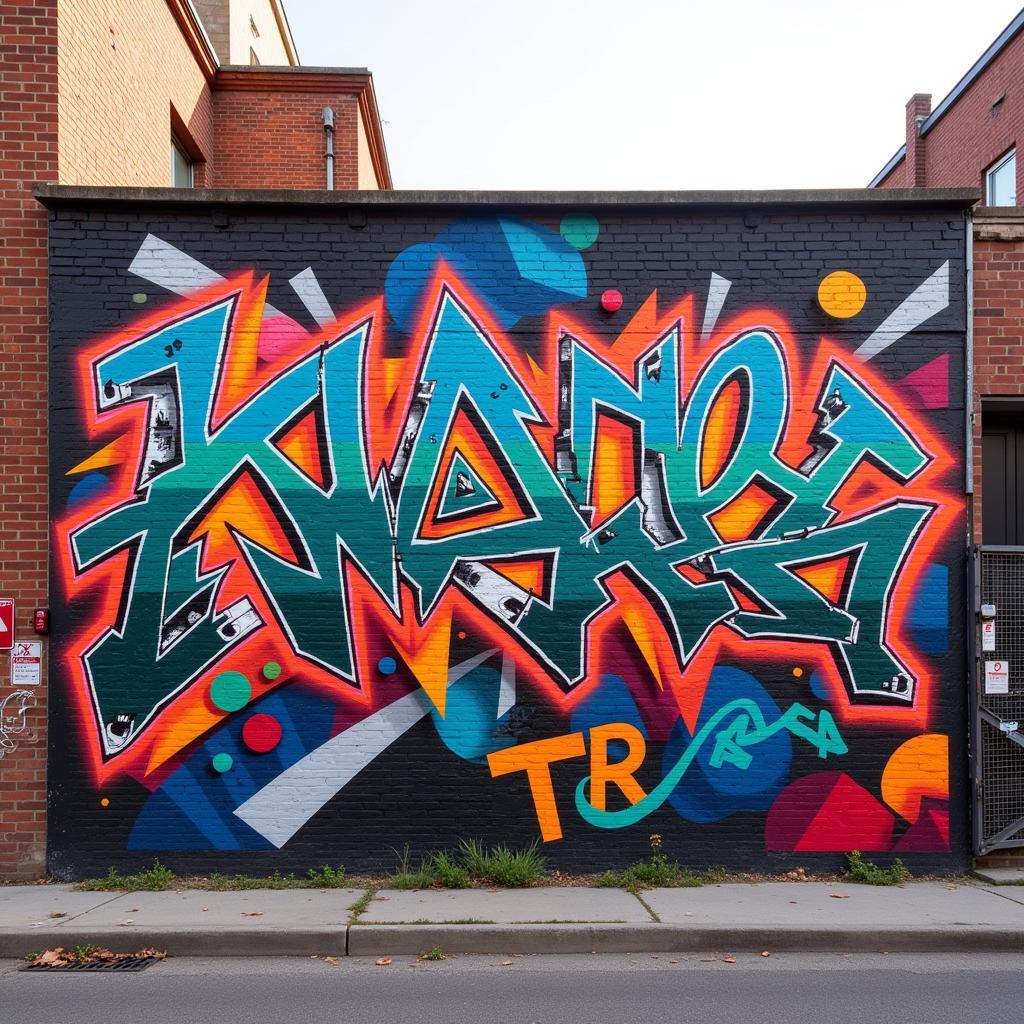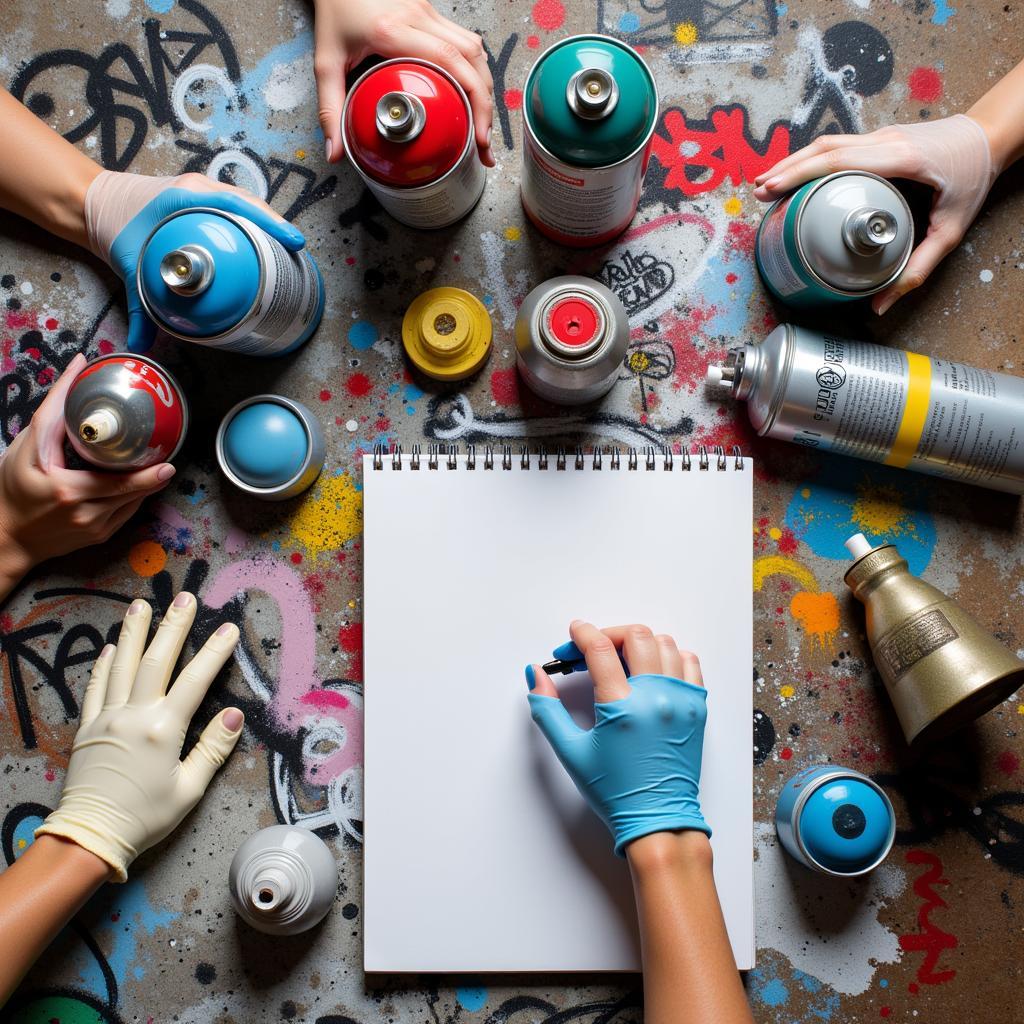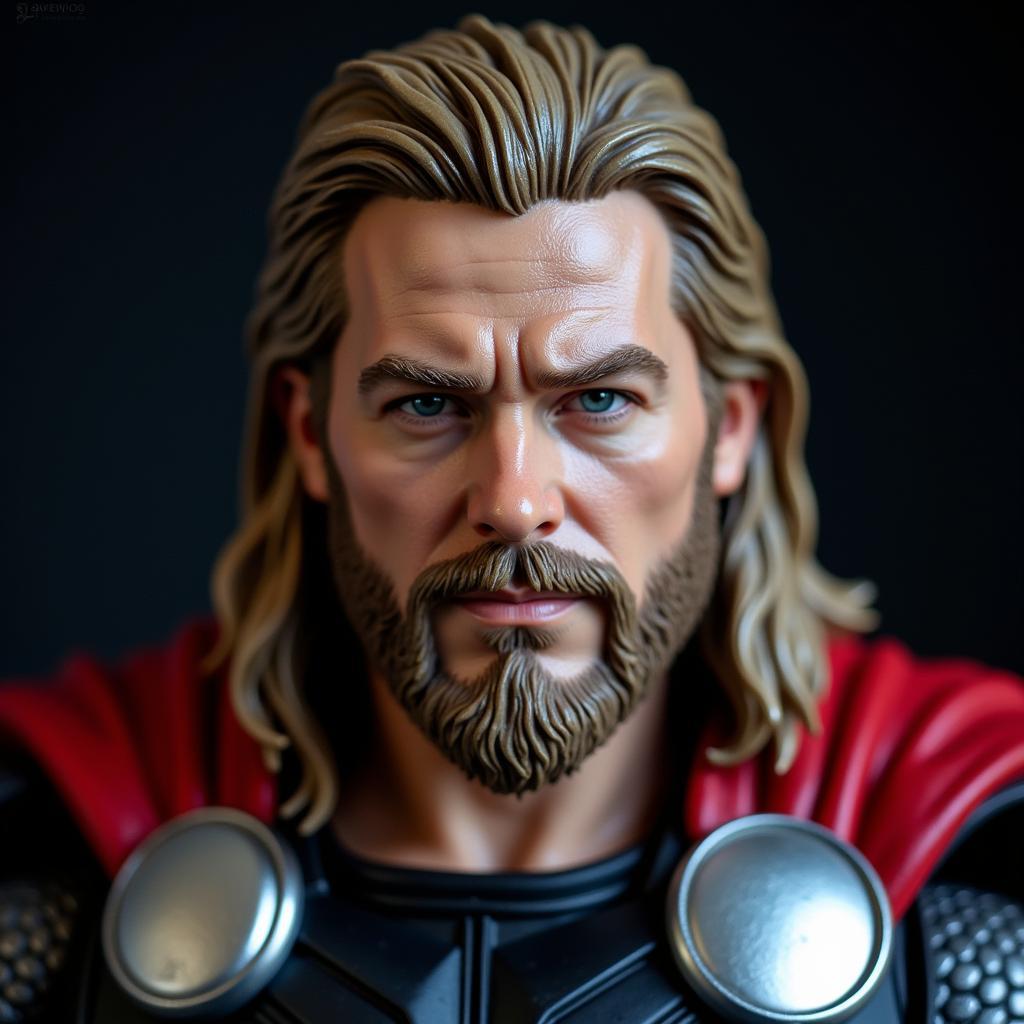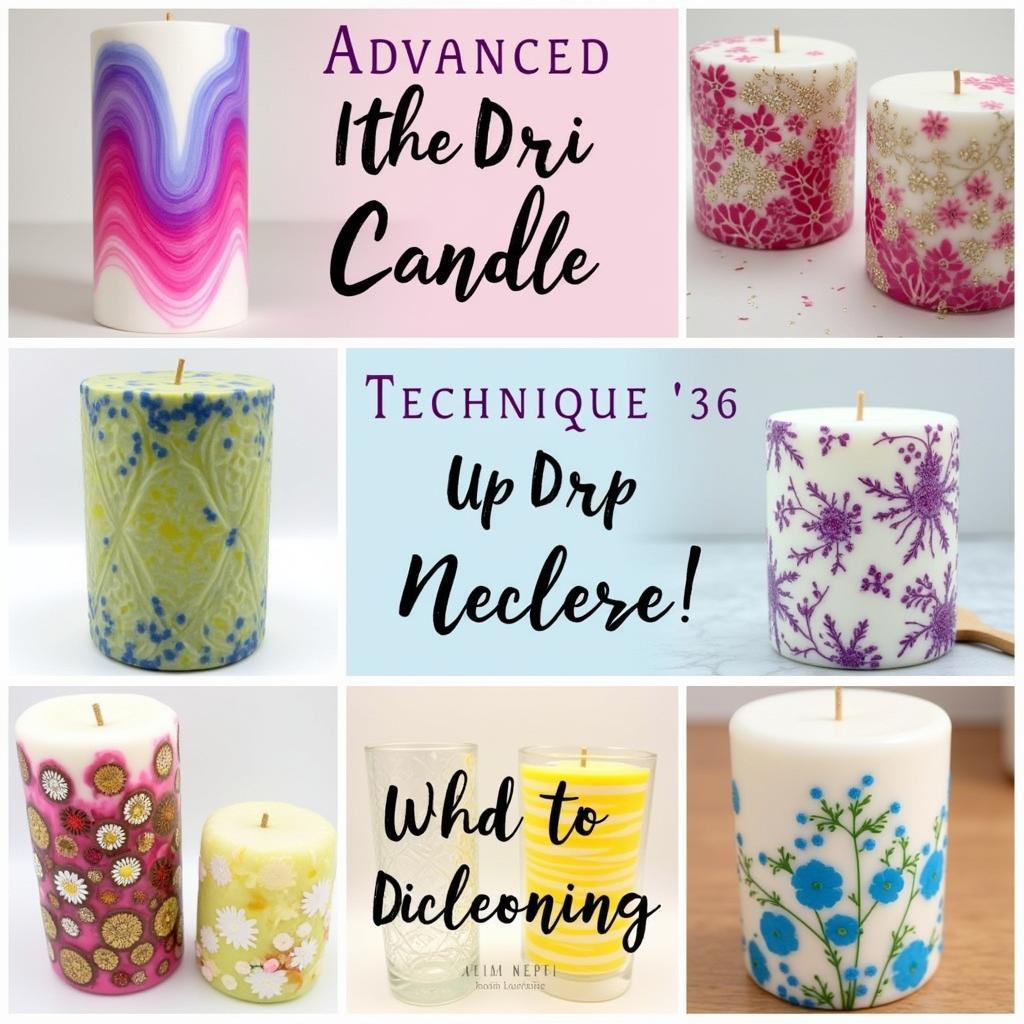Graffiti Abstract Art: A Fusion of Street and Style
Graffiti Abstract Art represents a fascinating intersection where the raw energy of street art collides with the nuanced expressions of abstract forms. This dynamic art style pushes creative boundaries, challenges conventional aesthetics, and sparks conversations about urban landscapes, self-expression, and the very nature of art itself.
Delving into the Abstract Graffiti Movement
 Abstract Graffiti Mural
Abstract Graffiti Mural
While traditional graffiti often centers around lettering and imagery with clear messages, abstract graffiti delves into the realm of form, color, and texture. It’s about conveying emotions, ideas, or simply aesthetic explorations through non-representational visuals. Imagine vibrant splashes of color dancing across weathered walls, intricate patterns weaving together to create a sense of depth and movement, or bold geometric shapes interacting in unexpected ways. This is the essence of abstract graffiti, where the artist’s inner world is projected onto public spaces, inviting viewers to interpret and connect with the art on a personal level.
The Roots and Evolution of a Movement
The origins of abstract graffiti can be traced back to the pioneers of abstract art itself, like Kandinsky and Mondrian, who broke free from traditional representation in the early 20th century. Fast forward to the 1970s and 80s, during the burgeoning graffiti movement in New York City, and you see the emergence of artists like Futura 2000 and Rammellzee incorporating abstract elements into their work, blurring the lines between street art and fine art.
Key Characteristics and Influences
Abstract graffiti, much like abstract art animals, often incorporates elements of:
- Abstract Expressionism: Emphasis on spontaneous gestures, bold brushstrokes (or in this case, spray paint strokes), and the artist’s emotional response to the urban environment.
- Geometric Abstraction: Use of geometric shapes, lines, and patterns to create a sense of order, rhythm, and visual impact.
- Street Art Aesthetics: Often found in public spaces, utilizing materials readily available in urban settings, and reflecting the grit and energy of the streets.
The Allure and Impact of Graffiti Abstract Art
What makes abstract graffiti so captivating is its ability to transform mundane urban spaces into vibrant canvases of artistic expression. A blank wall becomes a portal into the artist’s imagination, inviting viewers to pause, reflect, and engage with their surroundings in a new light. It challenges preconceived notions of what art should be and where it should be found, democratizing art appreciation and making it accessible to everyone.
This art form also has the power to spark dialogue and raise awareness about social and political issues. Artists often use their work to comment on urban decay, gentrification, or other challenges faced by their communities. By presenting these issues through the lens of abstract art, they can engage viewers on an emotional level, prompting reflection and potentially inspiring change.
Creating Your Own Graffiti Abstract Art
 Graffiti Art Supplies
Graffiti Art Supplies
Creating your own abstract graffiti art can be a liberating and expressive experience. Whether you’re an experienced artist or just starting out, here are a few tips to get you started:
- Gather Your Materials: Spray paint is the classic medium for graffiti art, offering vibrant colors and the ability to cover large surfaces. However, you can also experiment with acrylic paints, markers, stencils, and even found objects.
- Find Inspiration: Look to the world around you for inspiration. Observe the colors, textures, and patterns found in nature, architecture, and everyday objects. Explore the work of established abstract graffiti artists and see what resonates with you.
- Experiment and Don’t Be Afraid to Make Mistakes: Abstract art is all about exploring and expressing yourself freely. Don’t be afraid to experiment with different colors, techniques, and compositions. Let your intuition guide you and embrace the unexpected.
- Consider Your Composition: While abstract art doesn’t adhere to traditional rules of representation, a well-balanced composition can enhance the visual impact of your work. Think about the placement of elements, the use of positive and negative space, and how different colors and shapes interact with each other.
- Practice Makes Perfect: Like any art form, mastering abstract graffiti takes time and practice. Don’t get discouraged if your first attempts don’t turn out exactly as you envisioned. The more you experiment and explore, the more confident you’ll become in your abilities.
Conclusion
Graffiti abstract art is a testament to the power of human creativity and the ever-evolving nature of artistic expression. It challenges us to look beyond the surface, to find beauty in unexpected places, and to embrace the dynamic interplay between art and the urban environment. So, the next time you encounter a splash of color or an intriguing pattern on a city wall, take a moment to appreciate the artistry behind it. You might just discover a whole new world of creative inspiration.
FAQs
1. What is the difference between graffiti and abstract graffiti?
Traditional graffiti often involves lettering, characters, or recognizable imagery with clear messages, while abstract graffiti focuses on non-representational forms, colors, and textures to evoke emotions and ideas.
2. Is abstract graffiti considered vandalism?
The legality of graffiti, including abstract graffiti, varies depending on location and context. It’s essential to be aware of and respect local laws regarding public art and property.
3. Who are some famous abstract graffiti artists?
Notable abstract graffiti artists include Futura 2000, Rammellzee, Os Gemeos, and Maya Hayuk, among many others.
4. Can I create abstract graffiti art even if I’m not a trained artist?
Absolutely! Abstract art is open to everyone, regardless of their artistic background. It’s a wonderful way to express yourself creatively and explore the world of art.
5. Where can I find more information about abstract graffiti art?
You can find a wealth of information online, in art books, and by visiting galleries and museums that showcase street art and contemporary art.
If you’re looking for inspiration to kickstart your artistic journey, check out our articles on letter g art craft and canvas black and white art for unique ideas and techniques.
Need help with designing your own wall art? Explore our collection of designer wall art stickers for stylish and easy-to-apply options.
Have questions or need assistance with your art projects? Contact us at Phone: 02462573573, Email: danteum@gmail.com. You can also visit us at Savico Megamall, 7-9 Đ. Nguyễn Văn Linh, Gia Thụy, Long Biên, Hà Nội 10000, Việt Nam. Our customer support team is available 24/7 to assist you.

